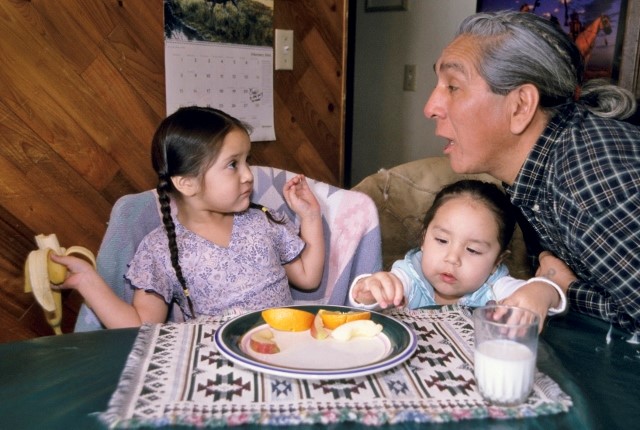This post originally appeared on the NICOA blog.

American Indian/Alaska Native (AI/AN) Elders have long experienced disparities in health and healthcare. A health disparity is a difference in health outcomes from different groups within the population.
Historically, AI/AN communities have had limited access to quality healthcare. One outcome of treaties between AI/AN communities and the federal government is that all federal recognized tribes have a right to healthcare services. The Indian Health Service (IHS)* was created to meet this federal commitment.
Although there are 567 federally recognized tribes to date, there are many more tribes still seeking federal recognition. Therefore, some AI/ANs are not eligible for IHS services. To further compound challenges, IHS services are primarily focused in rural areas in spite of the fact that 78% of AI/ANs now live in cities and urban areas. Disparities in health are a major issue in AI/AN communities and stronger advocacy is still required to address these pressing needs. (1)(2)(3)
Health Disparities
Health disparities for AI/Ns are clear. As of 2014, cancer is the leading cause of death for AI/ANs, followed by heart disease. The opposite is true for people of other races. AI/ANs experience certain cancers such as kidney, liver, and stomach cancer, at higher rates than non-Hispanic white (NHW) individuals. AI/ANs also face higher rates of obesity and diabetes than the general population, among other health disparities. (4)(2)
Social Determinants of Health
While it’s easy to focus on the numbers, these statistics represent the symptoms of the problem rather than the cause.
The specific reasons for health disparities are complex and represent much more than who AI/ANs are. They also represent where people live and the services available and accessible to them. Factors such as having a regular source of care, language and communication barriers, lack of diversity in the healthcare workforce, high rates of poverty, lack of insurance coverage, discrimination against AI/ANs, and large distances from healthcare services have all added to the disparities that affect AI/AN communities. (5)
These factors are what the U.S. Department of Health and Human Services has defined as the “Social Determinants of Health.” Broadly, the factors fall into five categories:
- economic stability
- education
- social/community setting
- health and healthcare, and
- neighborhood/environment.
Disparities in AI/AN health will not improve just by focusing on the numbers. Instead, improvement can be made through community health education, and economic standing, and by creating healthier and engaged communities.
NICOA’s Commitment
The National Indian Council on Aging (NICOA) strives to inform AI/AN Elders and others about healthcare disparities so that there is greater understanding about the many factors that influence health statistics and especially those that impact AI/AN communities. NICOA’s mission is to advocate for improved comprehensive health, social services, and economic wellbeing for American Indian and Alaska Native Elders.
To help improve heath equity among AI/AN Elders, NICOA supports policies that:
- Establish health education, awareness and prevention programs for AI/AN Elders
- Fund ongoing research of health disparities in aging
- Improve healthcare access and quality for Elders, and
- Promote inclusion of AI/ANs in gerontology and geriatric research
Click here to download NICOA’s new fact sheet about health disparities in American Indian/Alaska Native communities.
*The Indian Health Service (IHS), an agency within the Department of Health and Human Services, is responsible for providing federal health services to American Indian and Alaska Natives.
Sources
- Centers for Disease Control, cdc.gov/minorityhealth/populations/REMP/aian.html
- US Dept. of Health and Human Services, Cancer and American Indians/Alaska Natives, http://www.minorityhealth.hhs.gov/omh/browse.aspx?lvl-4&lvllD-31
- US Dept. of Health and Human Services, http://www.minorityhealth.hhs.gov/omh/browse.aspx?lvl-3&lvllD-62
- Centers for Disease Control, http://www.cdc.gov/media/releases/2014-p0422-natamerican-deathrate.html
- Indian Health Service, https//www.ihs.gov/newsroom/factsheets/disparities/
The opinions expressed in this article are those of the author and do not necessarily reflect those of the Diverse Elders Coalition.

